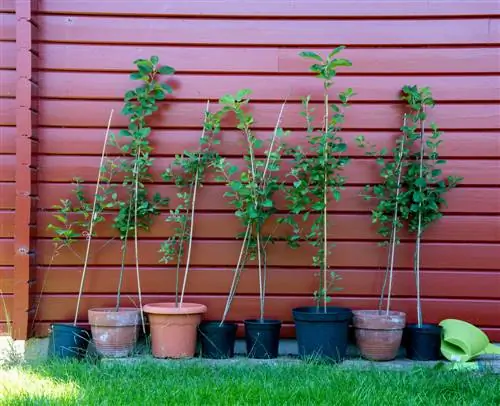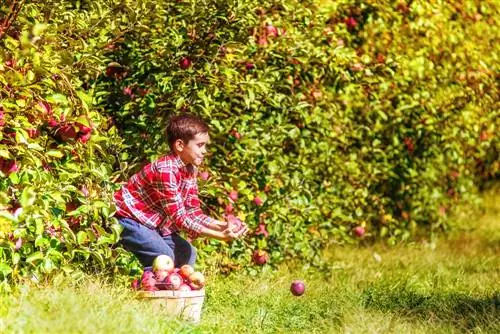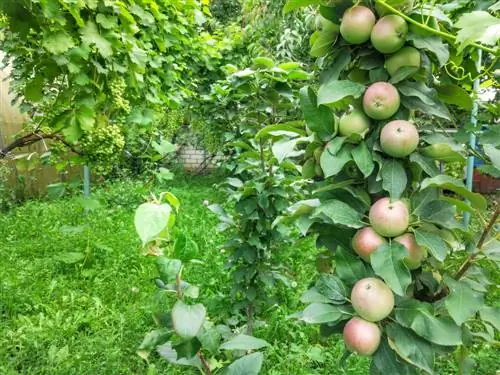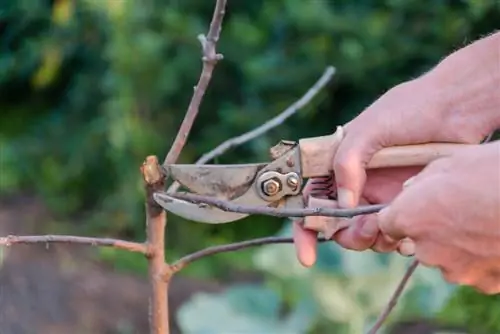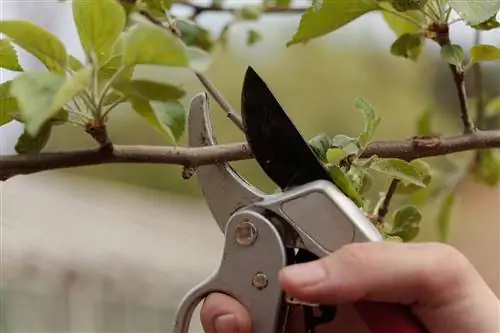- Author admin [email protected].
- Public 2023-12-16 16:46.
- Last modified 2025-01-23 11:21.
If you only have a small garden or even just a balcony, you can still grow he althy fruit: a narrow fruit tree grown into a column makes it possible.
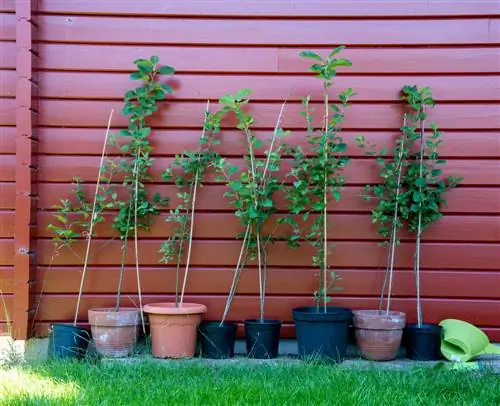
What is a columnar fruit tree and which varieties are recommended?
A columnar fruit tree is a special growth habit in which the tree grows in a columnar shape and only forms a few side shoots. Ideal for small gardens or balconies, popular varieties include 'Flamenco' (apple), 'Concorde' (pear), 'Sylvia' (cherry) and 'Top' (plum).
What is a columnar fruit tree?
A columnar fruit tree is a specific growth habit in which the tree grows in a columnar shape and produces no or only a few side shoots. A strong growth in thickness can often be observed, with the wood becoming very strong and later not flexible. In addition, the buds are often very close together. This growth habit is more or less genetically influenced and cannot be achieved through pruning.
The best columnar fruit varieties
These columnar fruit varieties are particularly recommended.
Apple
- ‘Flamenco’: fruit ripens September to October, red, sour
- ‘Golden Gate’: September to October, reddish, sweet
- ‘Polka’: September to October, sour
- ‘Rondo’: September, often striped, sweet and sour
- 'Black noble apple': September to October, deep black-red, sweet
Pear
- ‘Concorde’: September to October, greenish-yellow, sweet and sour
- ‘Saphira’: September, greenish, sweet
- ‘Decora’: September to October, green-red, sweet
Cherry
- ‘Sylvia’: June to July, red
- ‘Victoria’: July, deep red, sweet
Plum
- ‘Top’: August to September, blue, sweet
- ‘Imperial’: September, blue-violet, juicy
Cut columnar fruit trees correctly
Some columnar fruit trees require almost no pruning because they only grow upwards and only produce a small amount of side wood. However, if longer side shoots form, simply cut them back to three to four centimeters. Flowers can develop from this. By the way, once the columnar fruit tree has reached the desired height, cut it diagonally above a bud. New shoots that may form there are treated in the same way as lateral shoots.
Pillar fruit in the bucket
Pillar fruit can be easily cultivated in a container. So you can always place it wherever you want it to be. To start with, choose a planter with a volume of 10 liters, which will be replaced over time when repotting and enlarged to 25 to 30 liters. In winter, the bucket should be protected against strong cold, which can be done, for example, by covering it with brushwood, straw or bubble wrap. Where possible, the bucket can also be sunk into the ground over the winter months.
Tip
Shallow bush trees and spindle trees are also very suitable for small gardens, provided they are grafted onto a weakly growing base.

